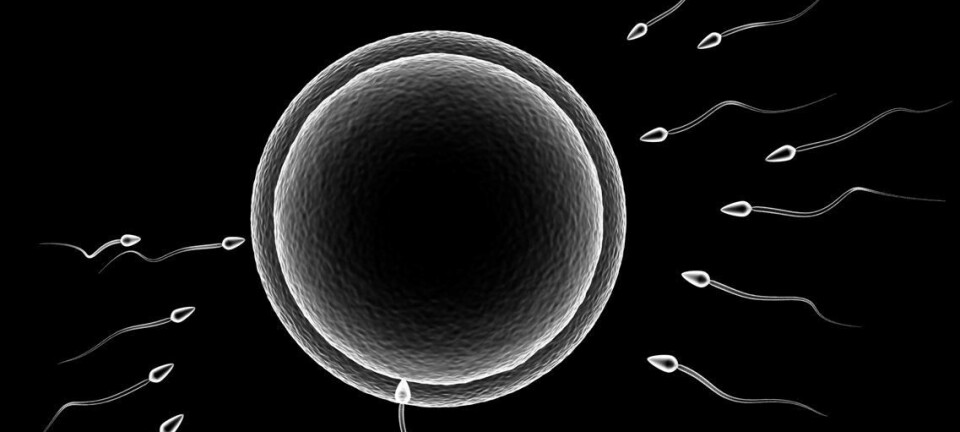
New genetic research highlights influences on children’s development
Two normally occurring variants in hitherto unknown genes influence the size of children’s heads. International research has set new standards for studies in genes’ importance for children’s development.
Doctors use the size of a baby’s head to determine how large and developed the baby’s brain is.
There also appears to be a relationship between the size of children’s heads and their intelligence. But the underlying mechanisms that determine head size have not been studied to any large extent.
However, international research with Danish participation now shows that two recently discovered genetic variants are decisive for the growth of the cranium.
The research has just been published in the scientific journal Nature Genetics.
Europe-wide collaboration
With this method we use a backdoor into biology and tackle research in a completely new way. We look at genes that we have no previous knowledge of and we can see that variations in the unknown genes influence the physical parameters we’re studying.
The results arose on the basis of comprehensive international collaboration in which researchers mapped genetic variants in many thousand children, primarily in Europe.
The genetic variations were then compared with numerous physical parameters such as weight, height, head size and susceptibility towards several ailments such as asthma, allergies and extreme obesity.
In this way, the researchers could see which genes are responsible for the development of various physical parameters and ailments.
“This was exceptional basic research in which we found unknown functions of some known genes,” says Hans Bisgaard, DMSci, MD, clinical professor in paediatrics at the Department of Gynaecology, Obstetrics and Paediatrics at Gentofte Hospital and at the University of Copenhagen.
“Thanks to this research we now know more about how babies develop.”
Bisgaard, who also heads the Danish Pediatric Asthma Centre, COPSAC, was responsible for parts of the Danish contribution to the research project, together with PhD student Eskil Kreiner Møller, COPSAC.
More than 20 European research units were involved in the project, which gave results that no single research unit alone can achieve – partly for financial reasons.
An analysis of one person’s genes costs about €4,000. Analysing the genes of the 19,000 children in this part of the project would cost around €8 million.
Thus the individual research units face financial constraints in carrying out such comprehensive studies alone.
“When we look at our own research, we ‘only’ have data from a small test group of about 1,000 children,” says Bisgaard.
“We can’t draw useful conclusions on the background of such a small sample. But if we combine our test group with other test groups throughout Europe, we have a total of many thousand test children. In this way our results become much more solid and less costly than for the individual research groups.”
Studied over 2.5 million markers
In scanning the genomes of the many children, the researchers studied variations in more than 2.5 million selected markers spread throughout the children’s genetic material.
A marker is a point on a chromosome that tells scientists something about which of the body’s molecular components (nucleotides, see Factbox) make up the DNA in precisely that area.
Variations in the molecular components around a specific marker may change the function of the genes in the area, and this can influence e.g. how the head grows as the foetus develops.
Comparing the genetic variants at the markers with the children’s physical parameters, the researchers could see that children with large heads also had a specific genetic variant around two markers at chromosome 12 at genes labelled SBNO1 and HMGA2.
So the conclusion is: if children have some specific nucleotides in the markers at these genes on chromosome 12, then they also have larger heads on average.
Reverse genetic research
Normally, researchers first develop a theory about a possible link between a genome and a physical parameter before they make their studies. For instance, this could be that SBNO1 has an influence on head size. However, this traditional method can limit researchers in their possibilities of studying genes whose functions they have no prior knowledge of.
The Danish researchers therefore decided to do things another way.
“We tested all markers throughout the whole genome without having a theory,” says Møller. “In other words, we had no theories about links between markers and physical parameters before we started our studies. Because a marker also tells us something about the nucleotides around the site of the marker, we can study the genes in the area to see which of them have been affected.”
He adds: “With this method we use a backdoor into biology and tackle research in a completely new way. We look at genes that we have no previous knowledge of and we can see that variations in the unknown genes influence the physical parameters we’re studying.”
-------------------------------
Read this story in Danish at videnskab.dk
Translated by: Michael de Laine
Scientific links
- Common variants at 12q15 and 12q24 are associated with infant head circumference, Nature Genetics, doi:10.1038/ng.2238
- Eskil Kreiner Møller's profile







